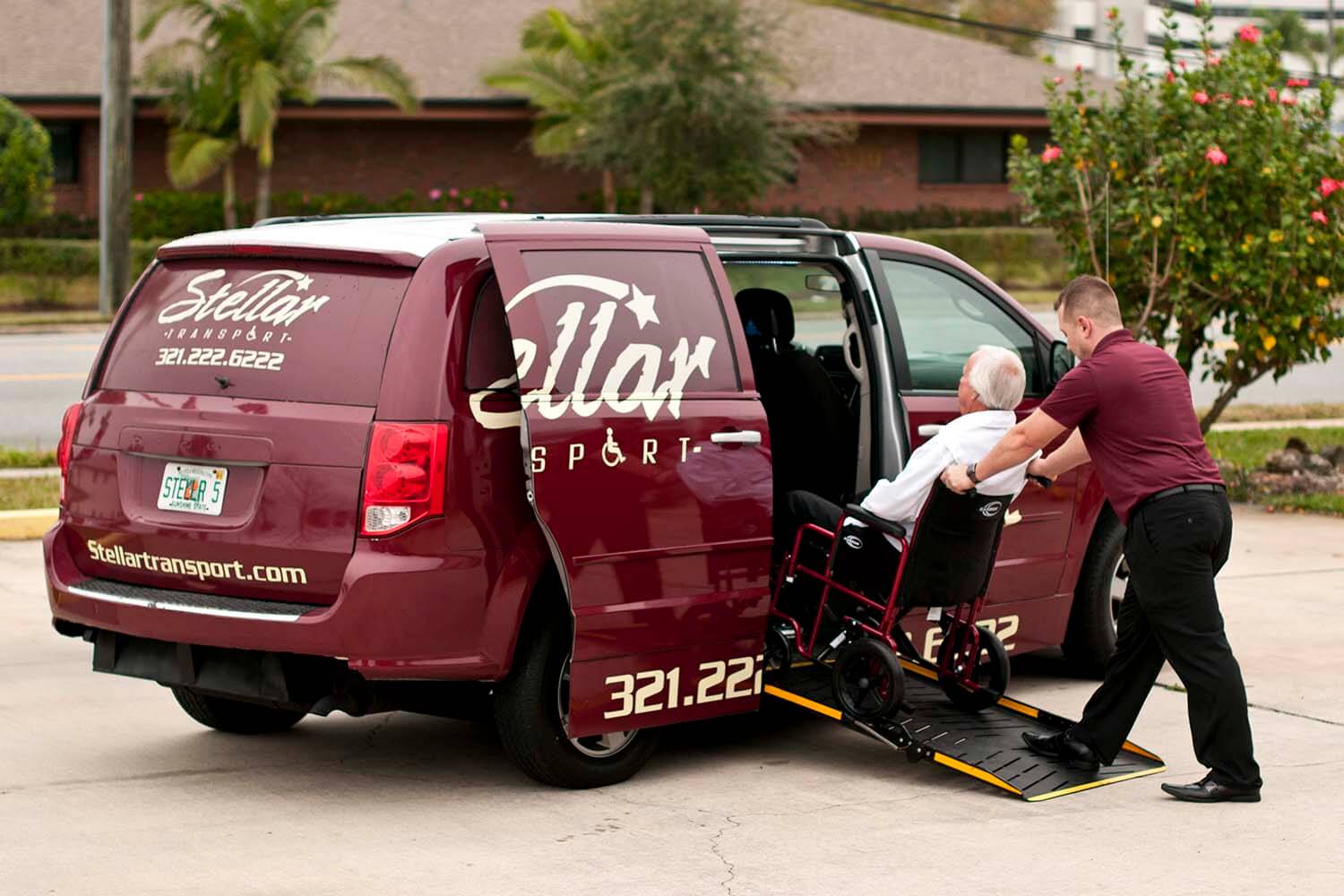One of the most important responsibilities of a non-emergency wheelchair transportation service is to properly strap in wheelchairs to prevent serious injury. Even if drivers are trained in defensive driving and follow all driving laws an accident is always a possibility, for which commercial transportation services must be prepared.
When a vehicle hits a moving object it comes to a complete stop within one tenth of a second. Anything inside of the vehicle that is not restrained does not come to a stop and instead continues moving forward at around 30 miles per hour towards the point of the crash. In other words, if a wheelchair is unrestrained or not properly secured it will roll or fly forward in the instance of a crash.
The actual calculations for the exact force behind the forward motion involves Newton’s Law of Motion, which multiplies the weight of the object in pounds times the speed in miles per hour (force = mass X acceleration or deceleration).
An actual example is if you have a 75-pound child sitting in a 35-pound wheelchair with a 5-pound insert for a total of 115 pounds. The equation for this scenario would look like: 115 lb. X 30 mph = 3,450 pounds of force.
This force increases if you’re in a power wheelchair. For instance, if you take the same 75-pound patient and put them in a 200-pound power wheelchair with a 5-pound insert that equals a total of 280 pounds. This puts the equation at: 280 lbs. x 30 mph = 8,400 pounds of force.
That’s a considerable amount of force. If you are transporting elderly wheelchair patients, chances are they weigh more than a 75-pound child, further increasing the impact of force.
Thanks to Newton’s Law of Motion we know the true importance of proper restraint systems for all passengers, including those in wheelchairs. Commercial drivers must have more than just a basic understanding of these principles in order to properly transport wheelchair patients of all ages.
Key Principles Of Crash Protection
There are three key things that a properly installed and utilized wheelchair restraint system does:
- Proper safety restraints help evenly distribute the pressure of the crash. For instance, you don’t want crash forces to solely come down on bony structures or soft structures, such as the tummy area. This is why it’s important to make sure the harness is capable of stretching and the seat is capable of bending a bit in order to take on some of the impact.
- Proper crash protection systems are necessary to prevent the occupant from hitting the interior of the vehicle.
- Installing the right protection systems also helps prevent ejection of the wheelchair patient in the instance of a crash.
Wheelchair Seat Belts And Restraints
There are two important aspects of wheelchair restraint systems, the wheelchair seating systems and vehicle tie-down systems. You need both, not one or the other.
A wheelchair should be fitted with a seatbelt that fits across the pelvis as opposed to over the abdomen. Pommels and chest harnesses, as well as other positioning aids should never be substituted for seatbelts but are great tools to use for added support and positioning.
The seatbelt needs to be secured to the wheelchair frame. If the seatbelt is attached to removable parts of the wheelchair, such as the armrest, you could be in for trouble as this is not a secure way to hold back thousands of pounds of pressure in the instance of a crash.
Wheelchair Headrests
Headrests are important because they help keep the neck protected; other options include a snug chest harness, soft neck collar or foam tray.
Remove Wheelchair Lap Trays
Remove wheelchair lap trays for transportation purposes. These trays are made in no way shape or form to endure a crash, and can cause serious injury to the abdomen area if left attached. Also, they can come dislodged due to impact and become a flying danger to others in the vehicle.
Keep Wheelchair In Upright Position
During transportation the wheelchair should always be in an upright position, never reclined. If a wheelchair is tilted during a crash it changes the actual force of gravity and puts the wheelchair at a much greater risk for sliding out under the seatbelt or coming apart all together.
The Highest Level Of Wheelchair Transportation Safety
There are many factors that go into properly loading, unloading and securing a wheelchair for transportation, such as unique medical circumstances and various build and weight of wheelchairs. Even the slightest mistake or oversight can end in injury or death.
Stellar Transportation is leading the way for wheelchair, stretcher and elderly non-emergency transportation services in Florida. All of our vehicles are fully equipped with the latest tools and technology to safely transport any wheelchair.

